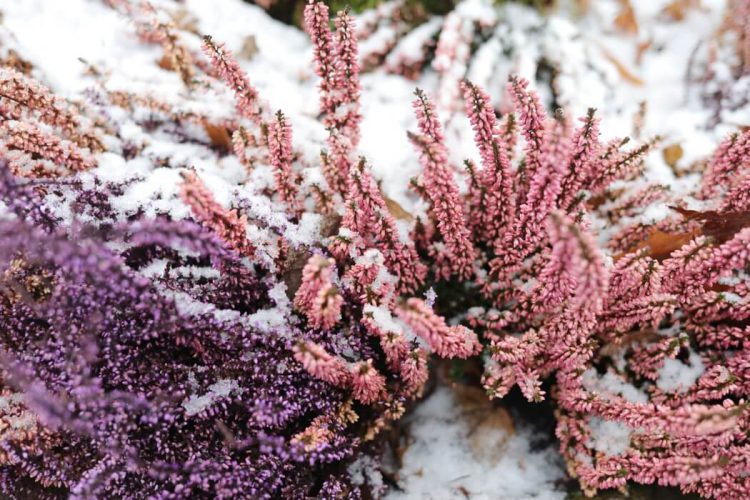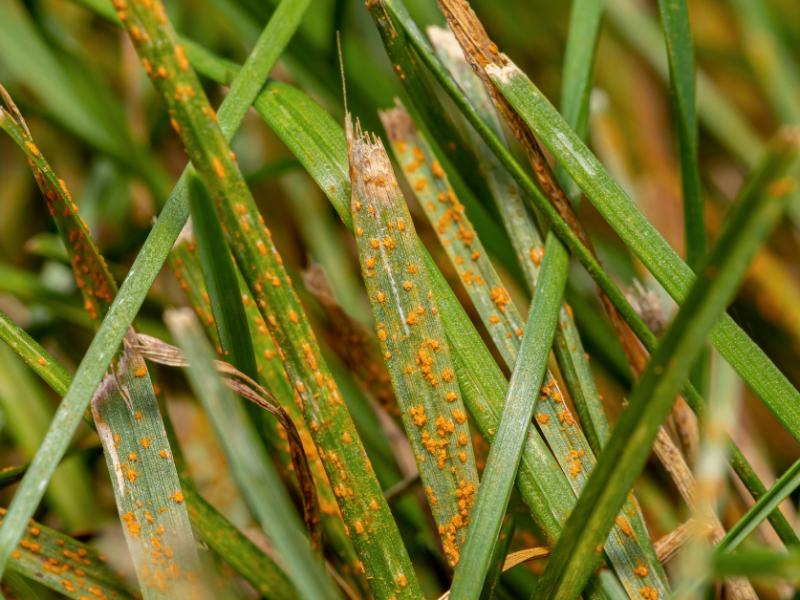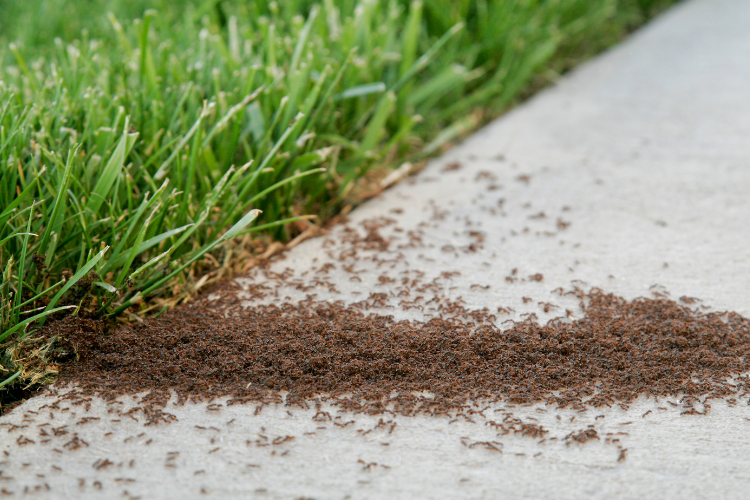Despite the fact that we tend to spend less time in our gardens during the winter, it’s important not to let them go bare as soon as the cold weather rolls around. There are many flower species that can actually thrive in freezing temperatures and add a wide range of colours and scents to your home. Whether you prefer to populate your garden with shrubbery or you have a range of flower beds to fill, there are winter plants to suit any garden.
Here are just some of the winter flowering plants to consider adding to your garden this year.
Heather
Heather is a low maintenance evergreen shrub, popular for its bright pink, purple or white flowers. Heather is hardy and resilient, meaning it can grow all year round and in all types of soil. Erica carnea, Erica x darleyensis, and Erica erigena are the specific heather families that thrive best in the winter and these can be planted in direct sunlight or in the shade, so there is no need to worry about finding a perfect spot. These evergreen shrubs are low-growing, so are ideal for filling flower beds or growing below trees. Heather is arguably one of the easiest shrubs to plant as it adds colour and depth to your garden come rain or shine.
Snowdrops
Snowdrops are a signature winter plant, with the white droplets adding a magical feel to any garden. These are best planted in moist soil, such as underneath shrubs, trees and in particularly mossy areas.
While snowdrops are unlikely to withstand freezing temperatures at the peak of winter, planting them towards the end of winter as spring starts to show gives you plenty of time to enjoy their unique and wintery addition to your garden.
Holly bushes
Despite their harsh appearance, holly bushes can add a special and festive touch to your garden. The holly bush is a widely used Christmas icon, perfect for adding some deep green into your garden at a dark and chilly time of year. If you’re planning to incorporate holly bushes into your garden, it’s best to prepare in advance and plant them around spring time. This way, they have time to adjust to their environment and benefit from rainfall before the drier and freezing temperatures hit.
Depending which holly bushes you have planted, your bush may lose its leaves throughout autumn and winter time. Ilex verticillata, otherwise known as winterberry holly, drops all leaves in autumn, meaning that during the winter, you are left with a brightly coloured cluster of red berries – perfect for creating an ideal winter garden! You could even use the berries to decorate your home around Christmas time.
Pansies
Pansies are less of a traditional winter plant but are a lovely way to boost the range of colours in your garden in the colder months.
Winter-flowering pansies in particular, are ideal for filling any pots, boxes or flower beds around your garden. Pansies are ideal if there is a certain colour or theme you want your garden to adhere to, as there are plenty of vibrant colours to choose from. While pansies are a largely versatile plant, aim to plant your pansies in the areas of your garden that tend to get the most sunlight, though pansies can survive in partial shade if needs be.
Blue spruce
Blue spruce is a great way to add colour to your garden without making too much of a statement with flowers. Otherwise known as Colorado spruce, the green/blue pines are inherently Christmassy and add a subtle yet special feel to gardens.
Besides needing to be positioned in a relatively sunny area, the blue spruce is an easy tree to care for. Be prepared to be patient though, as they are slow growers. If you want to add some blue spruce to your home in time for next winter, plant it now to get ahead and benefit from their beautiful frosty appearance.
Witch hazel
If you’re looking for a more exotic and unique looking flower to add to the winter plants in your garden, witch hazel is the one for you. The flowers consist of thin and unusual looking streamers in place of petals. The yellow, orange or red colours of witch hazel, coupled with the spiced scent they give off, make it an ideal winter plant.
This blog post should provide you with plenty of inspiration to get planting and create a winter garden bursting with a variety of colours and scents. Greensleeves are experts at keeping gardens in tip-top shape no matter the weather. Book in now for a winter lawn treatment or get your 2020 lawn care scheduled in advance.





